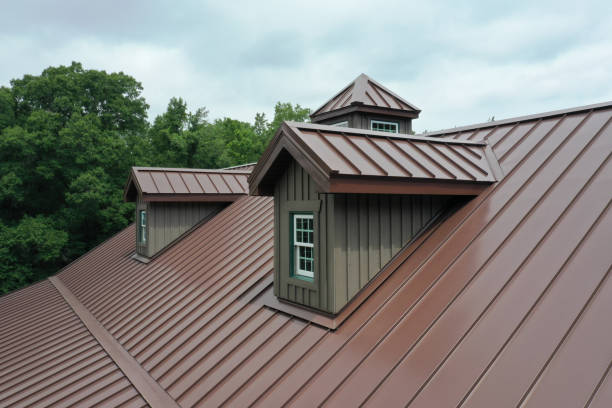The Eco-Friendly Option – Metal Roofing’s Recyclability
Metal roofing stands out as an eco-friendly and sustainable roofing option due to its exceptional recyclability. In a time when environmental consciousness is increasingly crucial, the recyclability of materials is a vital consideration in construction practices. Metal roofing, often made from steel or aluminum, offers a solution that minimizes waste and reduces the strain on natural resources. Unlike other roofing materials, such as asphalt shingles, which typically end up in landfills after their useful life, metal roofing can be recycled repeatedly without losing its inherent properties. The recyclability of metal roofing starts with its production process. Many metal roofs are manufactured using a significant portion of recycled content, contributing to the conservation of resources and reducing the demand for new raw materials. Additionally, metal roofs have an impressively long lifespan, often lasting 50 years or more with proper maintenance. This durability minimizes the need for replacements, further reducing waste generation over the roof’s lifecycle.

When a metal roof eventually reaches the end of its service life, it can be entirely recycled. Metal recycling is a well-established process that involves collecting, sorting, and melting down the materials to create new products. The recycling process for metal roofing is highly efficient, with the majority of the material being recovered and repurposed. This closed-loop system allows for the transformation of an old metal roof into new metal products, such as new roofing materials or other metal-based products, without compromising the quality or performance. The recyclability of metal roofing not only benefits the environment but also presents economic advantages. The high value of recycled metal makes it an attractive material for salvage companies and recycling facilities, potentially offsetting the cost of the new roof installation. Additionally, the reduced demand for new raw materials due to metal recycling helps stabilize material prices and reduces dependence on mining and extraction industries, which often have significant environmental impacts.
Furthermore, metal roofing offers additional environmental benefits beyond recyclability view the page https://www.greensborometalroofing.com/. It is highly reflective, minimizing heat absorption and reducing cooling costs during hot summers. The durability and resistance of metal roofing to elements such as wind, fire, and hail contribute to its longevity, reducing the need for repairs or replacements. This extended lifespan translates to fewer materials being manufactured and transported over time, resulting in lower carbon emissions associated with production and transportation. In conclusion, metal roofing’s recyclability makes it a compelling eco-friendly choice for sustainable construction. Its ability to be recycled indefinitely, combined with its long lifespan and minimal environmental impact during production, sets it apart as a roofing option that promotes resource conservation, waste reduction, and environmental stewardship. By selecting metal roofing, individuals and communities can make a conscious choice towards sustainable living while enjoying durability, energy efficiency, and aesthetic appeal that metal roofs provide.




